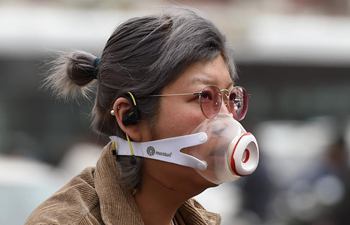NANJING, March 28 (Xinhua) -- A man's decomposed body parts were found in an open space in Kunshan, east China's Jiangsu Province, in December 2011.
Police collected DNA samples at the scene, hoping the evidence would unlock the secret of the deceased's identity, but the investigation stalled due to a lack of technology.
Thanks to facial recognition software, police identified a possible identity last year and compared the DNA samples with the person's parents.
They were then able to catch the murderer, who killed the man after a dispute over how to divide gains from credit card fraud.
The software analyzes aspects of a person's face -- the space between the eyes or how long the nose is -- and creates a template, which is then compared to a database of photographs to identify a person.
"The technology is not affected by changes in physical appearance such as hair style and body shape," said an investigator involved in the case who refused to be named.
"The process of photo matching, when done manually, is hugely time consuming. Police now can devote more time to other vital tasks," he said.
Technology has become a game changer for unsolved cases, especially ones that have gone cold. It can greatly increase the efficiency of police officers.
Chinese police have launched a campaign to use new technology to solve cold cases since 2016.
Last year, 41 cold cases were solved in Jiangsu, a developed coastal province in China, with the earliest crime committed 30 years ago. The figure was 29 in 2016, and 19 in 2015, the provincial public security department said Tuesday.
In east China's Zhejiang Province, all murder cases committed in 2017 were solved during the same year. Meanwhile, police solved 88 cold cases, around 70 percent of them using fingerprint, DNA, or facial recognition technology.
Crime shows make the audience believe DNA samples can easily convict the guilty and clear the innocent, but in real life it is more complicated.
The DNA has to match either a previous offender in the national law enforcement database or a sample from one of the victim's close relatives. When it does not, the investigation hits a wall.
A 58-year-old man surnamed Xu was caught by police in early March, 20 years later after he killed a prostitute at a recycling station in Lianyungang, Jiangsu Province, after a dispute over the fee he should pay her.
"DNA comparison played a key role in solving this case," said Liu Ying, a police officer in Lianyungang.
DNA use in criminal cases was still in its infancy in 1990s. When Lianyungang police set up its first DNA testing laboratory in 2004, investigators compared Xu's DNA profile with certain offenders in the national law enforcement database.
It did not lead to a match until recently when Xu committed another crime and his DNA sample was recorded by the database.
Jia Dongtao, a police forensics expert in Nantong, said that a more complete DNA database, advanced comparison methods, and higher DNA testing sensitivity have provided assistance in solving cold cases.
Jia is especially good at extracting DNA samples from bones a long time after death. His technique can increase the extraction success rate and cut the extraction time from one month to only two days.
According to Jiangsu police, DNA technology helped solve around 40 percent of all current cold cases last year.
Luo Wenjin, an official in charge of police forensics in Jiangsu, said that police investigation has entered the digital age. There are now DNA testing laboratories in all county-level police stations in the province.
"The technological advances used in criminal cases provide good tools for us to create a safer society," said Luo.
















